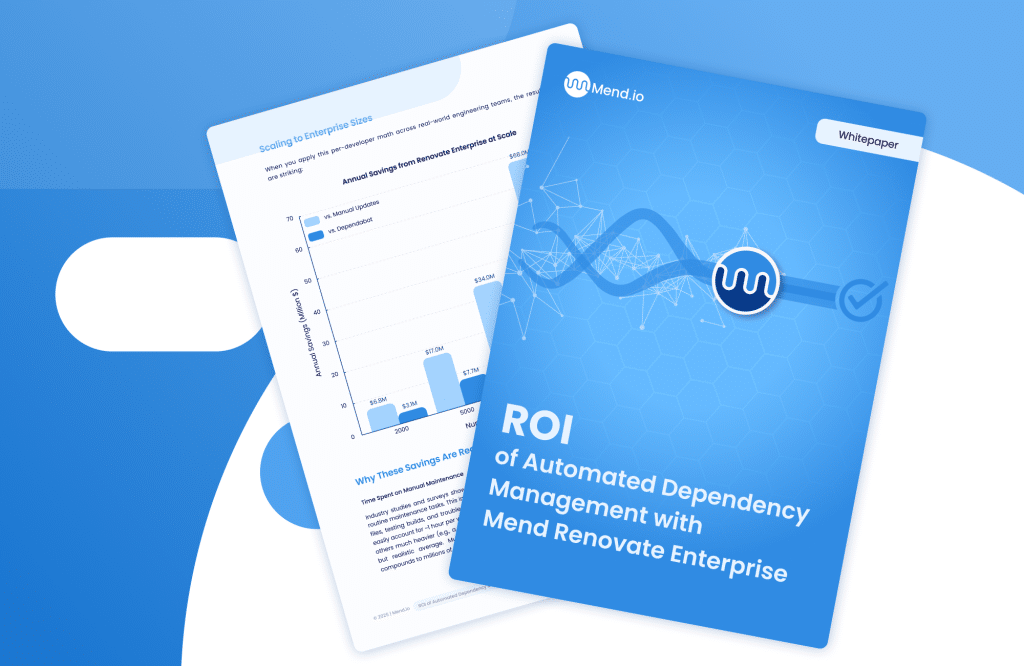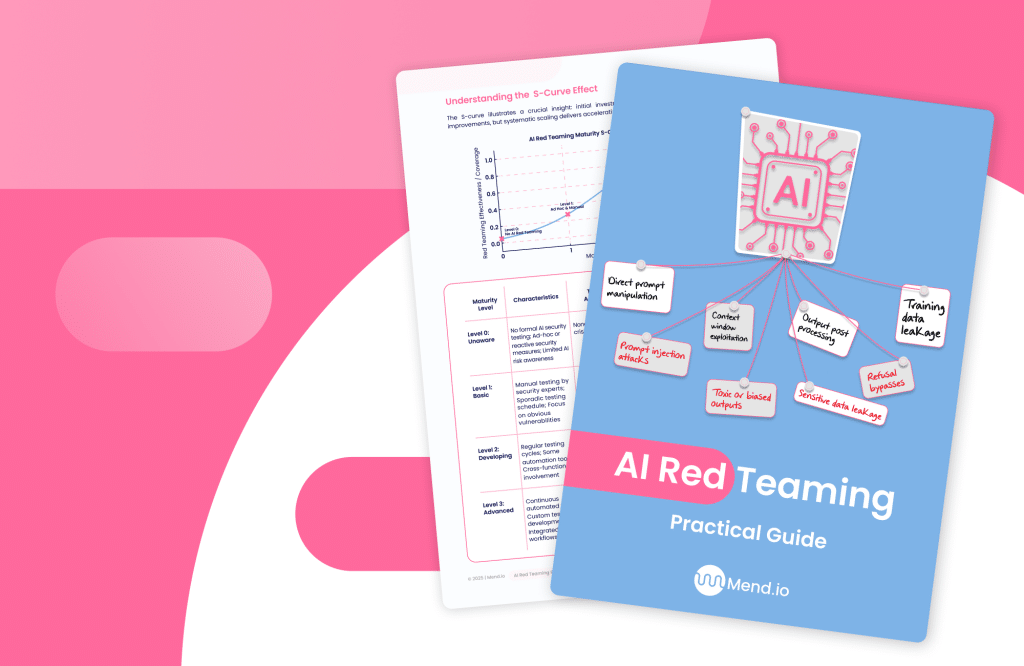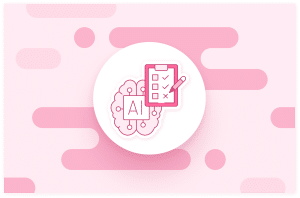Table of contents
What Is AI Penetration Testing and 5 Techniques

What is AI penetration testing?
AI penetration testing is the process of systematically probing artificial intelligence systems—especially machine learning models and their surrounding infrastructure—for vulnerabilities, misconfigurations, and exploitable behaviors. Unlike traditional pen testing, which targets predictable software behavior and static code, AI pen testing confronts probabilistic systems that adapt to data and evolve over time.
As organizations rapidly adopt AI to power customer experiences, automate decision-making, and analyze sensitive data, these systems are becoming high-value targets. But they’re not like traditional apps: a model that performs flawlessly today may degrade tomorrow as data patterns shift, seemingly harmless inputs can be crafted to elicit biased or harmful outputs, and attackers do more than just exploit the app—they also manipulate the data it learns from, the APIs it exposes, or even the model weights themselves.
For heads of application security, AI pen testing is emerging as a critical capability. Securing the wrapper around the model is certainly important but the model itself must be tested and validated that it consistently behaves as expected, resists manipulation, and doesn’t expose the business to ethical, legal, or reputational risks. The goals go beyond bug-hunting in traditional applications: think robustness, fairness, transparency, and long-term resilience. Organizations ready to operationalize this work can compare leading AI red teaming services to understand what expert-led testing programs look like in practice.
This article is part of a series of articles about AI red teaming.
Why AI systems are uniquely hard to secure
AI systems present a fundamentally different attack surface from traditional software. Instead of relying solely on fixed code paths, they learn from data—and that learning process is exactly where new threats emerge. From bias in training data to inputs crafted to fool a model, many of the vulnerabilities in AI stem from its dynamic, opaque, and probabilistic nature. Below are the most pressing security challenges specific to AI-driven systems.
Biased training data creates discriminatory outcomes
Machine learning models reflect the data they’re trained on, and if that data contains historical biases or lacks representation across key demographics, the resulting model can make unfair, unethical, or even illegal decisions. For security teams, biased outputs go beyond normal ethical risks because they can be exploited to trigger harmful behaviors or erode trust.
Concept drift and performance degradation over time
Unlike static applications, AI models can become stale or misaligned with reality as underlying data changes. This phenomenon, known as concept drift, can degrade model performance, introduce unexpected behaviors, and increase the attack surface over time if not detected and retrained.
Adversarial inputs can trick models into wrong decisions
Attackers can craft inputs that look benign to humans but are designed to fool a model into misclassifying them. This is especially dangerous in areas like fraud detection, facial recognition, or malware classification, where the stakes of false positives or negatives are high.
Data poisoning during training manipulates model behavior
If an attacker can influence the data used to train a model—whether through direct injection, third-party datasets, or tainted pipelines—they can skew the model’s behavior to their advantage. This is a long-game threat that is difficult to detect and costly to fix once the model is deployed.
Opaque model decisions obscure root cause analysis
AI models, especially large neural networks, are notoriously difficult to interpret. When something goes wrong, it’s often unclear why a model made a particular decision or how it arrived at its output. This opacity makes incident response and forensic analysis extremely challenging for security teams.
Lack of mature tools for AI-specific threats
Many existing security tools aren’t designed with AI systems in mind. They may monitor API traffic or infrastructure, but they don’t account for issues like adversarial robustness, model inversion, or prompt injection. The lack of purpose-built testing frameworks leaves many AI deployments exposed to novel classes of attacks.
What AI pen testing looks at: Key components
AI systems aren’t monoliths—they’re layered stacks of data pipelines, foundation models, APIs, orchestration frameworks, and cloud infrastructure. Each layer introduces unique security concerns, and a proper AI pen test must evaluate them all.
The OWASP Top 10 for LLM Applications provides a high-level view of the most critical risks across this stack—like prompt injection, insecure output handling, and training data poisoning. Penetration testing is how you probe for those risks in practice. It validates whether your controls are effective and where vulnerabilities still exist.
Model evaluation
This involves assessing the model’s resilience to adversarial inputs, susceptibility to overfitting (when a model performs well on training data but poorly on new, unseen data), and performance degradation over time. Testers aim to uncover how a model behaves when faced with edge cases, ambiguous inputs, or intentionally manipulative prompts.
The focus is on uncovering vulnerabilities that may not show up during training but become glaringly obvious in production:
- Adversarial input testing: Can slight, imperceptible changes in input (e.g., pixel shifts, reworded prompts) cause the model to behave unpredictably or incorrectly?
- Prompt injection and jailbreak attempts: Especially for large language models (LLMs), attackers can craft inputs designed to subvert instructions, extract internal instructions, or generate prohibited outputs.
- Model inversion & membership inference: These techniques aim to reconstruct training data or determine whether specific individuals’ data was used—an issue with serious privacy and compliance implications.
- Fairness and bias testing under duress: Attackers may deliberately target edge cases to provoke biased or reputationally damaging outputs.
- Model aging and drift simulation: Testers assess how performance degrades over time or when exposed to novel distributions, mimicking how real-world input changes post-deployment.
Data pipeline assessment
Security weaknesses often begin long before the model is trained. Testing the data pipeline involves inspecting how data is collected, labeled, preprocessed, and stored. Insecure data sources or mislabeled samples can introduce downstream vulnerabilities that compromise model integrity.
The old adage “garbage in, garbage out” takes on new urgency when attackers can intentionally manipulate data upstream:
- Poisoned datasets and training backdoors: If data sources are public or unverified, adversaries may inject malicious patterns that later trigger undesirable behavior in production.
- Label tampering: In semi-automated or crowdsourced pipelines, attackers can assign incorrect labels to influential samples, subtly biasing the model or degrading accuracy.
- Preprocessing vulnerabilities: Scripts or tools used for cleaning and formatting data may contain insecure code, dependencies with known CVEs, or logging misconfigurations that leak sensitive information.
- Data provenance and supply chain risk: Can you trace where each dataset came from and verify its integrity? If not, it’s a potential attack vector.
API and interface testing
Here testing involves fuzzing inputs, validating rate limits, probing for prompt injection flaws, and identifying methods of unauthorized access or abuse.
Public- or partner-facing AI interfaces—whether REST APIs, SDKs, or chatbots—are among the most visible and abused parts of the stack:
- Input fuzzing and injection testing: Testers explore what happens when inputs are malformed, excessive, or encode hidden instructions using Unicode or Base64.
- Rate limiting and abuse resistance: Can attackers brute force outputs, scrape content, or hammer endpoints with token-burning requests to rack up infrastructure costs?
- Tenant isolation and cross-session leakage: In multi-user deployments, a misconfigured prompt or shared cache could inadvertently expose one user’s data to another.
- Response manipulation: Can outputs be manipulated in a way that facilitates phishing, fraud, or disinformation campaigns?
Infrastructure security
Models don’t run in a vacuum. Pen testers must examine cloud environments, GPU access, storage locations for model artifacts, and configuration management. Compromised infrastructure can lead to model theft, tampering, or denial of service.
AI models are only as secure as the environments they run in. A robust pen test will evaluate:
- Model artifact protection: Are weights, embeddings, and fine-tuned models stored securely and encrypted at rest? Are they signed and verifiable?
- Credential hygiene in pipelines: Cloud access keys, API tokens, and SSH credentials often leak via environment variables or overly permissive IAM roles.
- Deployment hardening: Are CI/CD pipelines signing and validating artifacts? Can a rogue employee swap in a trojaned model?
- GPU and accelerator access controls: These are high-value targets. Are access policies in place to prevent unauthorized job execution or model theft?
Testers should look for the same kinds of cloud misconfigurations we’ve seen in traditional stacks—open S3 buckets, overprivileged roles, stale secrets—but with AI-specific implications.
Monitoring and logging
Ongoing visibility into model behavior is essential for detecting anomalies or attacks in production. Security doesn’t end at deployment—it depends on visibility into how models behave in the wild:
- Prompt and output logging: Is it possible to trace misbehavior back to a specific input? Are logs redacted to protect PII while still retaining forensic value?
- Real-time drift and anomaly detection: Can the system detect when the model starts behaving differently—whether from natural drift, silent failure, or adversarial manipulation?
- Integration with broader SIEM/SOC tooling: If the AI system starts spewing toxic outputs or showing signs of misuse, will anyone be alerted?
A pen test should validate that detection and response mechanisms exist, and aren’t just checking boxes.
Model governance and lifecycle management
Security isn’t a one-time exercise. Even the most secure model is vulnerable if its lifecycle isn’t managed thoughtfully. Testers should evaluate:
- Versioning and reproducibility: Is every training run logged, with code and data snapshots sufficient to fully recreate the model? If not, rollback and investigation become impossible.
- Access and privilege controls: Who can retrain the model, deploy it, or change configurations? Are those actions audited?
- EOL and rollback processes: How do you safely deprecate or retire a model? Can you undo a compromised deployment without downtime or data loss?
- Human-in-the-loop mechanisms: Are there processes in place to approve retraining or fine-tuning steps, or could an attacker automate malicious updates?
AI pen testing done right looks across the full attack surface—data, code, infrastructure, and human process—and brings to light not just technical flaws, but strategic blind spots in how an AI system is built, deployed, and managed.
How AI pen testing is done: Common techniques
AI penetration testing requires a distinct toolkit and mindset. Rather than focusing only on networks or application logic, testers must understand how to probe learning systems themselves. The techniques below represent some of the most effective—and emerging—approaches for evaluating the security posture of AI models and their surrounding ecosystem. If you’re assembling your own testing toolkit, see our guide to AI red teaming tools for frameworks that support adversarial, prompt-injection, and poisoning simulations.
1. Adversarial testing: Fooling the model with crafted inputs
Pen testers apply adversarial testing by generating inputs designed to exploit model vulnerabilities and blind spots. These inputs may appear normal to humans but are intentionally constructed to provoke incorrect or dangerous outputs. This type of testing is essential for any high-stakes use case, from medical diagnostics to autonomous vehicles.
2. Prompt injection: Hacking the conversation
Prompt injection allows adversaries to bypass controls, leak data, or manipulate outputs. This is particularly dangerous in LLMs like chatbots, copilots, and search assistants. To test resilience against prompt injection, pen testers attempt to embed hidden instructions in user inputs—mimicking real-world attacker behavior to determine whether the model can be manipulated.
3. Model extraction: Rebuilding the model from the outside
Given enough queries, it’s possible for an attacker to approximate the behavior of a target model, effectively stealing its intellectual property. This process, known as model extraction, allows adversaries to replicate commercial models without access to training data or architecture details. Including model extraction attempts in a pen test helps quantify the risk of unintended exposure and guides the implementation of mitigations like output randomization, watermarking, or differential privacy.
4. Red team exercises: Simulating the real attacker
AI red teaming brings together security experts and domain specialists to simulate sophisticated attacks against AI systems. These red team efforts are a core component of AI pen testing, enabling organizations to simulate real adversaries and evaluate system resilience under pressure. For teams seeking outside help, start by exploring top AI red teaming companies offering specialized offensive AI testing expertise.
5. Data poisoning: Corrupting the model at its source
By subtly manipulating training data, an attacker can embed backdoors, sabotage performance, or cause harmful behaviors to emerge only under specific conditions. Data poisoning is particularly insidious because the attack often goes undetected until the system is in production. Penetration testing in this area involves simulating poisoned datasets or injecting malformed training examples to observe whether the model incorporates malicious patterns. This helps uncover gaps in data validation, pipeline hygiene, and model retraining safeguards—critical controls for defending against real-world compromise.
6. Model inversion and membership inference: Extracting sensitive training data
Certain models can unintentionally leak details about the data they were trained on. Model inversion techniques reconstruct approximate inputs from outputs, while membership inference attacks determine whether a specific data point was part of the training set—posing serious privacy and compliance risks.
Why AI pen testing is still so difficult
Despite the growing need for AI-specific security testing, several structural and technical barriers make AI penetration testing uniquely challenging:
Limited tooling for AI-specific threats
Most traditional pen testing tools are designed for web apps, APIs, or infrastructure—not for evaluating model behavior, training data, or adversarial robustness. The lack of mature, purpose-built tooling makes it harder to simulate and measure the effectiveness of attacks on AI systems.
Ambiguous definitions of “secure” model behavior
Unlike conventional applications, AI systems don’t have clearly defined “correct” outputs. One model hallucination may be harmless and another may expose sensitive data or propagate harmful content. This makes it difficult for pen testers and security teams to know what constitutes a true vulnerability.
Lack of standardized testing methodologies
There’s no universal framework or playbook for AI pen testing. While organizations like NIST and ISO are making progress, today’s testers often rely on improvised workflows, academic techniques, or repurposed tools—limiting consistency and scalability.
Rapidly evolving attack surface
New model architectures, fine-tuning methods, and API interfaces emerge constantly. What’s secure today may be vulnerable tomorrow. Pen testers must stay on top of cutting-edge research just to keep pace with real-world attack potential.
Talent shortage at the intersection of AI and security
Very few professionals are well-versed in both machine learning and offensive security. As a result, many teams lack the internal capability to conduct meaningful AI pen tests or even interpret the results of external assessments.
These challenges don’t mean AI pen testing isn’t worth doing—on the contrary, they’re exactly why it’s essential to start building this capability early and iteratively.
How to operationalize AI pen testing effectively
Moving AI pen testing from theory to practice requires more than occasional red team exercises or reactive investigations. Organizations must build repeatable processes, integrate the right tools, and foster collaboration across teams. Here’s how to make AI pen testing an effective part of your security program:
Use purpose-built tools for AI security testing
Select tools that can evaluate model behavior, test adversarial robustness, and simulate AI-specific attack techniques. If you’re comparing options for continuous coverage or managed support, review current AI red teaming providers to understand different engagement models and integration depth.
Shift security left in the ML lifecycle
Security needs to be part of model development, not something bolted on later. Integrate testing into model training, validation, and deployment workflows to catch risks early and reduce downstream impact.
Test across diverse data slices
AI models can behave differently depending on the data segment. Include inputs across demographic, geographic, or behavioral dimensions to uncover hidden biases and inconsistent behaviors that could lead to exploitation or ethical failure.
Integrate AI pen testing into CI/CD pipelines
Where possible, automate pen test routines into the CI/CD workflow—particularly for retraining cycles, prompt updates, or architecture changes. Continuous testing helps ensure ongoing resilience as models evolve.
Align with emerging standards and frameworks
Leverage guidance from NIST’s AI Risk Management Framework, ISO/IEC 24029, or other industry-specific guidelines. These standards help justify investments and provide structure for AI governance.
Foster cross-disciplinary collaboration
The best AI pen tests come from teams that combine security knowledge with deep ML expertise. Encourage collaboration between red teamers, AI/ML engineers, compliance leaders, and product teams to build a holistic defense strategy.
Conclusion: The time to start is now
AI isn’t just another feature—it’s a shift in how software is built, behaves, and breaks. As adoption accelerates, so do the risks. Traditional security methods aren’t enough to surface the vulnerabilities unique to AI systems, which means pen testing must evolve.
Organizations that embed AI-specific penetration testing early and often won’t just find vulnerabilities, they’ll prevent incidents, improve trust, and gain a meaningful edge in an increasingly adversarial landscape. Whether you’re deploying your first model or scaling AI across your stack, investing in AI pen testing is foundational.











